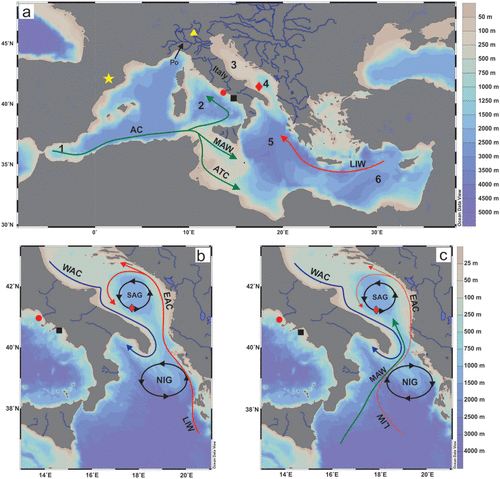Climate variability of the last ~2700 years in the Southern Adriatic Sea: Coccolithophore evidences

Cascella A., S. Bonomo, B. Jalali, M.A. Sicre, N. Pelosi, S. Schmidt, F. Lirer (2019).
The Holocene, https://doi.org/10.1177/0959683619865600.
Abstract
New information on palaeoenvironmental conditions over the past ~2700 years in the Central Mediterranean Sea have been acquired through the high-resolution study of calcareous nannofossils preserved in the sediment core SW104-ND14Q recovered in the Southern Adriatic Sea (SAS) at 1013-m water depth. The surface water properties at this open SAS site are sensitive to atmospheric forcing (acting both at local and regional scale) and the North Ionian Sea driven inflowing waters. Our data show a relationship between reworked coccolith abundances, flood frequency across the Southern Alps and the North Atlantic Oscillation (NAO) confirming their value as indicator of runoff/precipitation. Changes in the abundance of the opportunistic (r-strategist) species Emiliania huxleyi and deep dweller taxa Florisphaera profunda were used to reconstruct the upper water column stratification and associated changes in coccolithophorid productivity. The negative correlation between reworked coccoliths and the N-Ratio (r = −0.44; p = 6−7) suggest that fresh water induced stratification is a controlling factor of the SAS coccolithophorid production. High coccolithophorid productivity levels occurred during dry periods and/or time intervals of inflowing salty and nutrient-rich Levantine Intermediate Waters favouring convection while lower levels took place during high freshwater discharge, mainly during the ‘Little Ice Age’ and two centennial scale intervals of weakest NAO around 200 BCE and 500 CE.



Devi effettuare l'accesso per postare un commento.